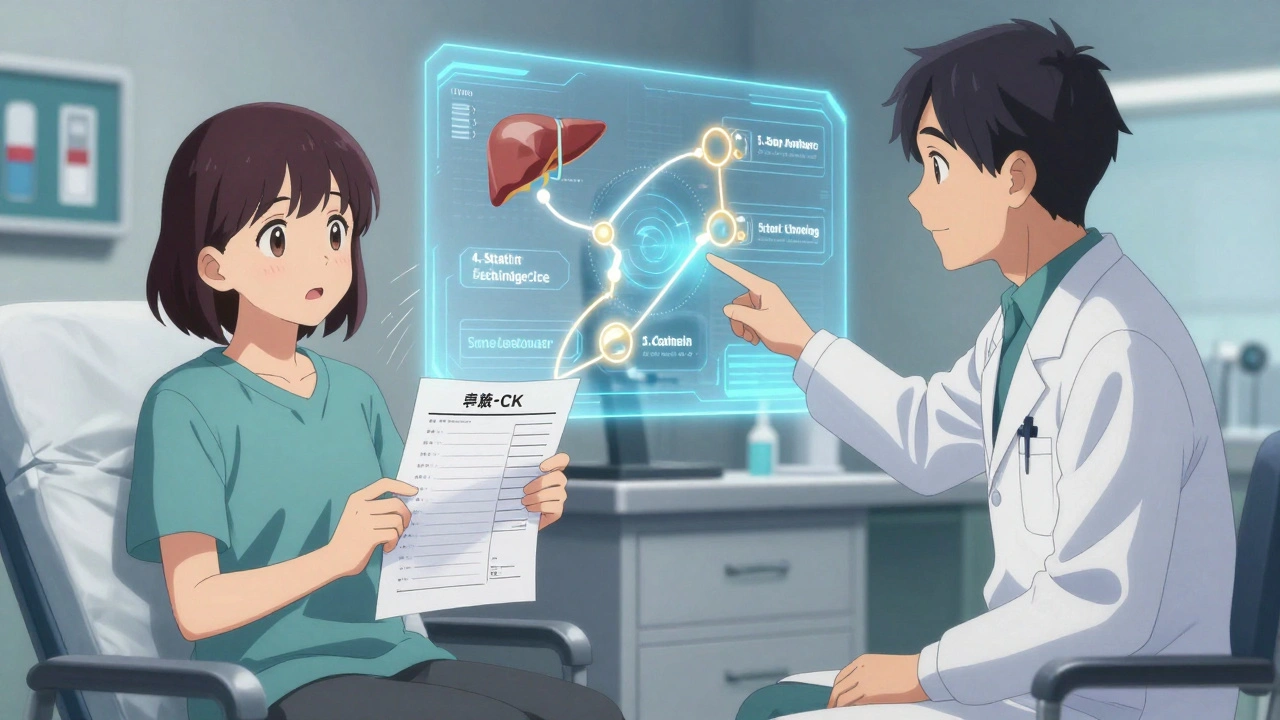Health and Wellness: Simple Tips for Everyday Better Living
We all want to feel good, but the advice out there can feel overwhelming. Below you’ll find bite‑size habits you can add right now, plus quick pointers on choosing supplements and medicines without getting lost in jargon.
Daily Habits That Boost Your Health
Start with movement. Even a brisk 10‑minute walk after lunch wakes up your muscles and steadies blood sugar. If you’re on warfarin or any blood thinner, pair that walk with a balanced plate—think leafy greens, a small portion of whole grains, and lean protein. The key is consistency, not intensity.
Hydration matters more than most people think. Aim for eight glasses of water a day, but if you’re sipping coffee or tea, add an extra glass of plain water. This simple trick helps keep your skin clear and reduces that dull, post‑shave redness many of us experience.
Sleep isn’t optional. A solid 7‑8 hours lets your body repair, especially if you’re dealing with medication side effects like anxiety from lisinopril. Try a wind‑down routine: dim lights, no screens 30 minutes before bed, and a short stretch.
Smart Choices for Supplements and Medications
If you’re curious about natural options, look at what science says. Nattokinase, an enzyme from Japanese natto, can support heart health by gently thinning blood, but talk to your doctor first if you’re already on a prescription blood thinner.
Cranberry juice often gets a shout‑out for bladder health. The real benefit lies in the pro‑anthocyanidins, not the sugar. Choose a low‑sugar, 100 % juice or a powder mix, and drink a small glass daily to help keep UTIs at bay.
When it comes to prescription meds, a quick check on common concerns can save you headaches. For example, Zocor (simvastatin) lowers cholesterol but may cause muscle aches; staying active and stretching can ease that. Similarly, Zantac’s recall reminds us to read safety updates and look for alternatives like ranitidine‑free antacids.
Supplements like mangosteen or ground pine are trending, yet evidence varies. Mangosteen offers antioxidants, but you’ll likely need a consistent dose over weeks to notice any boost in immunity. Ground pine claims anti‑inflammatory effects; start with a tiny amount and watch for any stomach upset.
Finally, don’t underestimate the power of vitamin balance. Headaches often trace back to deficiencies in B‑complex or magnesium. A daily B‑complex pill or magnesium‑rich foods—almonds, spinach, dark chocolate—can clear up that pounding feeling without a pharmacy visit.
These tips aren’t a one‑size‑fits‑all prescription, but they give you a toolbox to build a healthier routine. Pick one habit, stick with it for a week, then add another. Small steps add up, and before you know it you’ll feel more in control of your health and wellness journey.
Steroid Eye Drops: Benefits, Risks, and How to Monitor Them Safely
Steroid eye drops reduce inflammation quickly but carry serious risks like glaucoma and cataracts. Learn how to use them safely, recognize warning signs, and ensure proper monitoring to protect your vision.
Learn more...Diverticulitis: Understanding Inflamed Pouches and Modern Treatment Options
Diverticulitis is inflammation of small pouches in the colon, causing abdominal pain, fever, and digestive issues. Learn how it's diagnosed, why antibiotics aren't always needed, and how diet and lifestyle can prevent recurrence.
Learn more...Prescription Discount Programs and Coupons: Do They Actually Save You Money?
Prescription discount programs like GoodRx and manufacturer coupons can cut drug costs by up to 85% - but only for generics. Learn when they work, when they don't, and how to use them right.
Learn more...Tinnitus and Ringing in the Ears from Medications: What You Need to Know
Many medications can cause ringing in the ears - from aspirin to antibiotics to chemotherapy. Learn which drugs are most likely to trigger tinnitus, how to spot it early, and what to do if you notice symptoms.
Learn more...Statin Intolerance Clinics: How Structured Protocols Help Patients Tolerate Cholesterol Medication
Statin intolerance clinics use structured protocols to help patients who experience muscle side effects safely return to cholesterol-lowering therapy. Learn how rechallenge, dosing changes, and non-statin options can keep your heart protected.
Learn more...Patient Rights: How to Refuse Generic Substitution and Request Brand-Name Medications
Learn your legal rights to refuse generic drug substitutions and request brand-name medications. Know when you can say no, how to do it, and what to do if you’ve already been switched.
Learn more...Liquid vs. Tablet Medications for Children: What to Choose in 2025
Choosing between liquid and tablet medications for children isn't just about convenience - it's about safety, accuracy, and long-term adherence. Learn the real pros and cons in 2025.
Learn more...Blue Light and Eye Health: Screen Filters and Habits That Actually Work
Blue light from screens causes eye strain and disrupts sleep, but the real fix isn't expensive glasses-it's simple habits like the 20-20-20 rule, night mode, and proper lighting. Learn what actually works.
Learn more...How to Reduce Medication Risks with Simple Lifestyle Changes
Simple lifestyle changes like walking, eating less salt, sleeping better, and managing stress can cut medication needs by up to 50% for conditions like high blood pressure and diabetes-without stopping your prescriptions.
Learn more...How to Appeal Insurance Denials for Brand-Name Medications
Learn how to successfully appeal an insurance denial for brand-name medications. Step-by-step guide on medical necessity letters, internal vs external reviews, and what to do while you wait.
Learn more...








